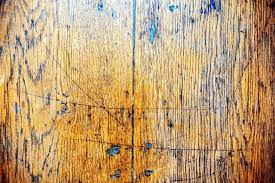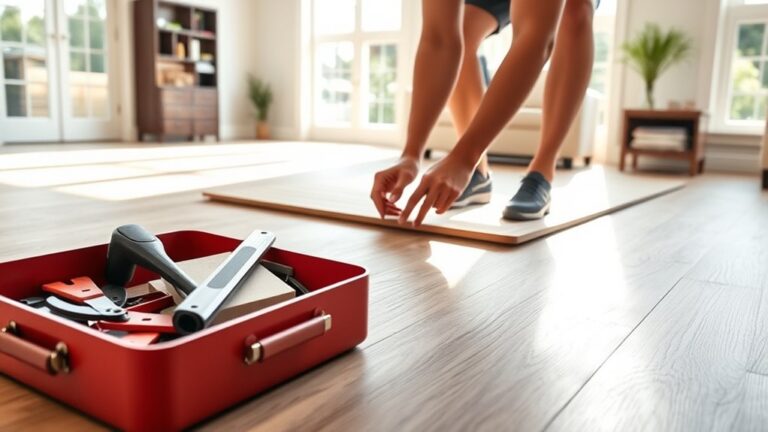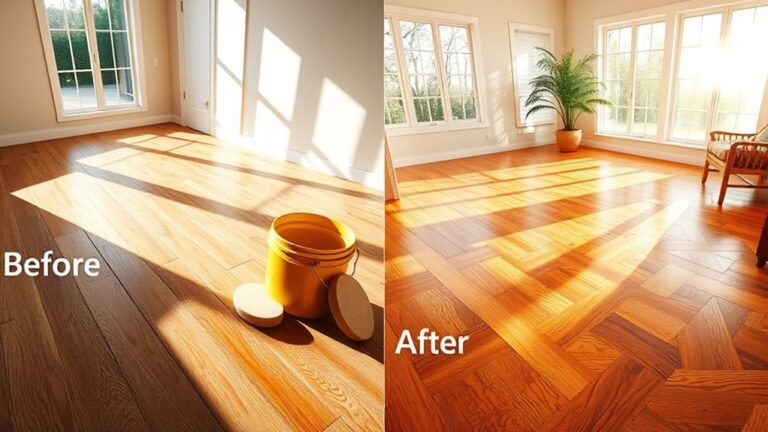Hardwood floors are beyond repair when they have extensive water damage or severe structural issues. Hardwood floors can add elegance and warmth to any home.
They are durable and can withstand years of foot traffic and daily use. However, there may come a time when your hardwood floors are beyond repair. This can happen when the floors have extensive water damage, such as from flooding or leaking pipes.
Water can cause the wood to warp or rot, making it impossible to salvage the floors. Additionally, hardwood floors may become beyond repair if they have severe structural issues like large cracks, deep scratches, or significant buckling. In such cases, it is often more cost-effective to replace the flooring entirely rather than attempting to repair it.
Understanding The Point Of No Return
When hardwood floors reach a state of irreparable damage, there are a few key signs to look out for. One of these indicators is excessive warping and buckling. This occurs when the floorboards start to lift and shift, creating an uneven and unstable surface.
Another surefire sign that your hardwood floors may be beyond repair is the presence of deep and widespread cracks. These cracks can compromise the structural integrity of the floors and can also become tripping hazards.
Additionally, severe water damage can be a significant factor that leads to floors being beyond repair. When water seeps into the wood, it can cause the boards to warp, rot, and even develop mold.
Overall, these signs indicate that your hardwood floors have reached the point of no return. It’s important to address these issues promptly to ensure the safety and longevity of your flooring.
Uncovering The Unseen Dangers
Hardwood floors are often cherished for their timeless beauty and durability. However, there are instances when these beloved flooring options become damaged beyond repair. In this blog post, we will delve into the hidden dangers that can render hardwood floors irreparable.
Hidden Structural Damage
One of the key indicators that a hardwood floor may be beyond salvage is hidden structural damage. This can occur due to various factors, such as water leaks, improper installation, or natural wear and tear over time. Oftentimes, this damage is not immediately visible and can only be uncovered through a thorough inspection by a professional.
Infestations And Mold Growth
Infestations and mold growth are serious threats to the integrity of hardwood floors. Wood-boring insects, such as termites or beetles, can weaken the structure from within, making repairs impossible. Similarly, mold growth can lead to irreversible damage if left untreated. Both infestations and mold growth require immediate attention to prevent further harm to the flooring.
Failed Refinishing Attempts
In an attempt to restore the luster of worn-out hardwood floors, some homeowners resort to refinishing. However, failed refinishing attempts can actually worsen the condition of the floors, making repair impractical. Factors such as improper sanding techniques, usage of low-quality products, or lack of expertise can result in irreparable damage, leaving no choice but to replace the flooring altogether.
It is important to keep an eye out for these hidden dangers to determine if your hardwood floors are beyond repair. Consulting with a professional is crucial in making an informed decision for the future of your flooring.
Weighing The Cost Of Repair Vs Replacement
Hardwood floors can add beauty and value to a home, but over time they can become worn and damaged, leaving homeowners wondering if repair or replacement is the best option. When assessing the condition of hardwood floors, it is essential to consider the costs associated with each choice. Estimating repair costs is an important step in the decision-making process. Factors such as the extent of the damage and the type of hardwood flooring will impact the overall expenses.
However, it is also crucial to assess potential long-term expenses. Even if repairs are possible, recurring issues may arise, leading to additional costs in the future. In some cases, comparing the benefits of replacement may prove to be more cost-effective in the long run. While the initial cost may be higher than repairs, new hardwood floors can provide a fresh and durable surface, reducing the need for ongoing maintenance.
Ultimately, when determining whether hardwood floors are beyond repair, it is necessary to weigh the cost of repair versus replacement. Considering the estimated repair costs, potential long-term expenses, and the advantages of replacement can help homeowners make an informed decision.
Choosing The Right Type And Quality
Choosing the right type and quality of hardwood flooring is crucial to ensure its longevity and durability. When considering hardwood floors, you have two main options: solid hardwood and engineered hardwood.
Solid hardwood is made entirely from real wood and offers a classic, timeless look. It can be refinished multiple times, making it easier to repair if needed. However, it can be more prone to moisture damage and may not be suitable for certain areas, such as below-grade rooms.
Engineered hardwood, on the other hand, is made up of multiple layers of wood with a top layer of hardwood veneer. It is more resistant to moisture and can be installed in various areas, including below-grade rooms. However, it may have limitations for refinishing and can be more expensive.
When choosing the wood species, it is important to consider its durability. Some species, such as oak and maple, are known for their strength and ability to withstand wear and tear. Others, like pine and birch, may be more susceptible to damage.
Lastly, evaluating the quality of the installation is crucial in determining the overall condition of hardwood floors. Poor installation can lead to issues such as gaps, unevenness, and squeaking, which may require costly repairs.
Proper Maintenance Practices For Extended Lifespan
Proper maintenance practices are essential for extending the lifespan of hardwood floors. Regular cleaning and dusting play a crucial role in preventing the accumulation of dirt, debris, and scratches. It is recommended to use a soft-bristle broom or vacuum cleaner with a brush attachment to remove loose dirt and dust from the surface.
Preventing scratches and dents is another important aspect of maintenance. Placing furniture pads under the legs of chairs, tables, and other heavy objects can help protect the floor from damage. Additionally, using floor mats or rugs in high traffic areas can reduce the risk of scratches caused by abrasive particles.
Protecting against moisture and humidity is vital for avoiding irreversible damage. Wiping up spills immediately and using a damp cloth for cleaning instead of soaking the floor is recommended. Regularly monitoring and maintaining the humidity levels in the room with appropriate measures such as using a humidifier or dehumidifier can help prevent warping.
Lifestyle Factors And Floor Lifespan
When considering the lifespan of hardwood floors, several lifestyle factors come into play. One of the primary factors is foot traffic and wear. High foot traffic areas, such as entryways or living rooms, tend to experience more wear and tear compared to less frequented rooms. Additionally, pets can have a significant impact on floors. Their claws and occasional accidents can cause scratches and stains, reducing the longevity of the hardwood surface. Another important factor is maintaining a controlled indoor environment. Fluctuations in humidity and temperature can cause the wood to expand and contract, leading to issues like warping, cracking, or buckling. Properly controlling these environmental factors can help extend the life of your hardwood floors. It’s also essential to regularly clean and protect the surface with appropriate finishes and products to prevent damage and preserve their appearance. Taking these lifestyle factors into consideration can help determine when hardwood floors are beyond repair and require replacement.
Salvaging Wood From Beyond Repaired Floors
Hardwood floors can add a classic and timeless look to any home. However, over time, they can become worn and damaged, reaching a point where they are beyond repair. When this happens, salvaging the wood from these floors can be a great way to repurpose it for furniture or décor.
One option for recycling old hardwood is repurposing it for furniture. The sturdy and durable nature of hardwood makes it an excellent material for creating beautiful and long-lasting pieces. By salvaging the wood from beyond repaired floors, you can give it a new lease on life by transforming it into tables, chairs, shelves, or anything else your creative mind desires.
Alternatively, donating the salvaged wood to salvage organizations is another eco-friendly option. These organizations often specialize in reclaiming materials from demolition sites, including old hardwood flooring. By donating the wood, you can help reduce waste and provide resources for others who are looking to repurpose and reuse materials.
Restoration Options For Extensively Damaged Floors
When hardwood floors are extensively damaged, homeowners may wonder if they can be restored or if they’re beyond repair. In such cases, there are several restoration options to consider. Partial replacement or patching is an option for localized damage like deep scratches or small areas of rot. This involves removing the damaged section and replacing it with new hardwood flooring.
Another option is to restore the floor with reclaimed wood. Reclaimed wood not only adds character to the space but also reduces the demand for new materials. This eco-friendly option involves salvaging old wood from various sources and repurposing it for flooring.
If restoring the damaged hardwood floors seems challenging or costly, homeowners can also explore the possibility of considering alternative flooring materials. Some popular alternatives to hardwood flooring include laminate, vinyl, engineered wood, or bamboo. These materials can mimic the look of hardwood while being more durable, budget-friendly, and easier to maintain.
Frequently Asked Questions For When Are Hardwood Floors Beyond Repair
Can Badly Damaged Hardwood Floors Be Repaired?
Yes, badly damaged hardwood floors can be repaired. It is possible to fix deep scratches, gouges, or stains, depending on the extent of the damage. The process may involve sanding, filling, and refinishing the floors to restore their original beauty.
How Do I Know If My Hardwood Floors Are Salvageable?
To determine if your hardwood floors are salvageable, look for signs of significant damage such as deep scratches, large water stains, or extensive warping. If the damage is limited to surface scratches or minor imperfections, refinishing may restore the floors.
It’s best to consult with a professional to assess the condition and determine the best course of action.
When Can Hardwood Floors Not Be Refinished?
Hardwood floors cannot be refinished when they are severely damaged, have thin or short planks, or have been refinished multiple times before. Additionally, floors with engineered veneer or laminate cannot be refinished. Remember to consult with a professional for accurate evaluation and guidance.
How Do You Know When Hardwood Floors Need To Be Replaced?
Hardwood floors need replacing when they have severe damage, including deep scratches, warping, or rot. Signs can also include excessive squeaking, shifting boards, or a worn-out appearance. Regular maintenance, such as refinishing or sealing, can prolong the lifespan of hardwood floors.
Conclusion
When hardwood floors suffer irreparable damage, homeowners may face difficult decisions. Understanding the signs that indicate floors are beyond repair is crucial. These signs include deep cracks, extensive water damage, severe warping, and structural issues. By recognizing these indications, homeowners can make informed choices regarding replacement or restoration.
Regular maintenance and prompt repairs can help extend the lifespan of hardwood floors and minimize the need for extensive interventions. Remember, consulting with professionals is vital for accurate assessments and expert recommendations.




